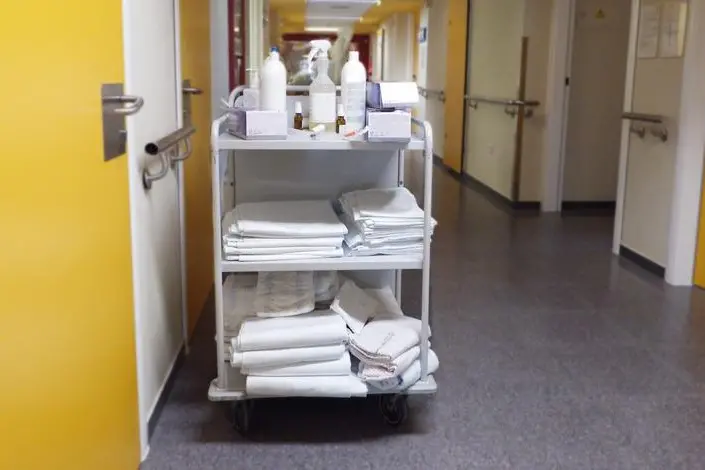PHOTO
Muscat: After bringing in an augmented reality device that helped doctors in Oman perform critical spinal surgery on a patient, the company that provided this technology intends to bring other cutting-edge medical equipment to help doctors take better care of patients.
The ClarifEye augmented reality surgical device was brought to Oman by global engineering company Philips, making it the first country outside Europe to receive this technology.
Doctors from the Armed Forces hospital recently used this tech to perform spinal stabilisation surgery on a 52-year-old national. Led by Col. Dr. Ahmed Al Jabri, the head of orthopaedics, the medical team that performed the surgery included practitioners from the orthopaedic, anaesthesia, operations, radiology and medical engineering departments.
“The Armed Forces hospital was interested in the imaging solutions that Philips could provide for their new operating room,” said Manoj Arora, Philips’ business leader for image guided therapy in the Middle East, Turkey and Africa (META). “The local team worked closely together with the headquarters on this project to make sure that the Ministry of Defence in Oman could be the first site outside Europe to benefit from this new solution.
“After the new hybrid operating room was installed, the ClarifEye augmented reality surgical navigation was added to it,” he explained. “Dedicated training was provided to the clinical staff and our support staff was present to support the teams performing the first medical cases using ClarifEye.
“We have a long history of bringing innovative technologies in healthcare, as well as a robust pipeline of innovation,” added Arora.
“The Middle East is a recognised area of growth geography, and Philips has its META headquarters based out of Dubai, which clearly shows the importance we attach to the Middle East region.
“Our entire HealthTech portfolio is available in the Middle East,” he said. “Any new product and solution that we develop are launched and introduced in Middle East countries immediately subject to local regulatory approvals and clearances. We are looking forward to partnering with the right healthcare delivery providers in the region with whom we can collaborate in developing or testing prototypes or creating proof points for our products and services, including developing AI solutions.”
A piece of technology Philips is currently working on is the Fibre Optic RealShape (FORS), which enables real-time 3D visualisation of the internal workings of the human body. FORS sends pulses of light through hair-thin optical fibres that run within minimally invasive devices. After successfully undergoing pre-clinical trials, the technology is currently undergoing clinical studies in the US and Europe.
“Just like we introduced our technology in Oman, we will continue to look for interested institutes and physicians willing to partner in launching new solutions,” said Arora, before explaining how ClarifEye works.
The system works with four integrated optical, hi-resolution cameras that look at the back of the patient, providing an external view. These optical images are combined with computer generated images of the internal spine, incorporating some of the same elements used in CT scanning.
In this way, the surgeon has a 3D view on the external and internal anatomy of the patient in the same view. The patient remains continuously tracked, as the cameras register the non-invasive markers that have been placed on the back of the patient. The system then plots the planned path for the needle or screw that then can be placed in the exact position, without the need to open up the patient.
This helps greatly in increasing minimal invasive treatment of the patient, resulting in lesser operative pain, a shorter stay in hospital, little blood loss and scarring.
Arora said in this context: “When performing delicate tasks in spine procedures, accuracy is paramount to achieving the best outcome for patients. We saw the need to support spine surgeons in improving their surgical workflow. The platform enables physicians to focus on the patient and procedures, while improving surgical workflow. This new solution differs from more conventional surgical methods.”
© Muscat Media Group Provided by SyndiGate Media Inc. (Syndigate.info).




















